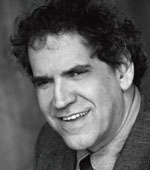By Rabbi Dr. Michael Leo Samuel

CHULA VISTA, California — One of the most remarkable traditions that has developed over the last 97 years is the Daf Yomi (a daily study of a page of the Babylonian Talmud), that was first introduced by R. Meir Shapiro. This Polish rabbi wanted to see more laypeople of the Orthodox Jewish communities engage in the Talmud study cycle that takes seven years to complete provided one studies a full page every day.
The celebration of this event is called a “Siyyum HaShas” and on New Year’s Day, over 90,000 Ultra-Orthodox and Modern Orthodox gathered at New Jersey’s MetLife Stadium.
This was a remarkable event. As they concluded the last tractate of the Talmud, with the Hadran, which reads:
- May it be Your will, our God, and the God of our fathers, that we should be loyal to Your Torah in this world, and it should be with us in the next world. Chaninah bar Pappa, Rami bar Pappa, Nachman bar Pappa, Achai bar Pappa, Aba bar Pappa, Rafram bar Pappa, Rachish bar Pappa, Sorchav bar Pappa, Ada bar Pappa, Daro bar Pappa . . .
Some scholars think the Papa family originated the custom of celebrating the conclusion of a Talmudic tractate.
- We give thanks before You, Lord, our God and God of our ancestors, for You gave us a share among those who sit in the study hall, and not among those who sit on street corners. For we arise early, and they arise early; we arise for words of Torah, and they arise for words of emptiness. We work, and they work; we work and receive a reward, and they work and do not receive a reward. We run, and they run; we run towards eternal life, and they run to a pit of desolation. . ..
One of the principle reasons the Daf Yomi cycle began is because many yeshiva graduates often give up studying the Talmud because of their need to earn a livelihood for their growing families.
And so, the Daf Yomi program has grown.
As someone who has been part of this learning project over the decades, the study of Talmud has been a part of my daily life since I graduated the yeshiva back in 1976; I was a newly ordained rabbi and dayan (judge).
There are many new aids to assist the Daf Yomi cycle. Since the 1960s, Rabbi Adin Steinsaltz produced a Modern Hebrew commentary, better known as the “Steinsaltz Talmud” which makes the Talmud more intelligible for the average Israeli who is unfamiliar with Jewish Aramaic, the language of the Talmud. The Artscroll Talmud began in 1975 and they improved upon the Steinsaltz edition in some ways. It presents a good synopsis of the medieval commentaries and disputations in the text. Steinsaltz’s Talmud presents Greek, Latin, biographical data, zoological and botanical identifications, something that the Artscroll does not.
The Talmud has played an important role in Jewish life since its original redaction in the year 500 C.E. It is composed of two parts, the Mishnah (Hebrew: משנה, c. 200), a written compendium of Rabbinic Judaism’s Oral Torah; and the Gemara (Hebrew: גמרא, c. 500).
Jewish Aramaic is a difficult language to understand at times. In the yeshiva, students used to joke about how the Aramaic text of the Talmud seems to leave out every other word. Actually, this is a valid criticism.
When teaching the Talmud, I often like to point out that the Talmud represents one of the oldest open source documents of history. Today’s concept of the blog began long ago when the rabbis debated the finer points of Jewish law.
In the introduction to my book, Gentle Judaic Wisdom, I pointed out how the Greek sophists influenced the Pharisees. Socrates was the greatest of the sophists, and he took a dim view of literacy, which had just begun in his time. He felt the oral exchange of ideas is more conducive than the reading of an actual text. The Sages liked that idea, and that is how the Oral Torah came to be born.
Not every rabbinic scholar admired the Talmud. Scholars like Maimonides felt that the cacophony of opinions scattered throughout its pages only served to confuse the reader, who often became befuddled how the Talmud concluded its discussions. Maimonides wrote his Mishneh Torah to actually simplify the Talmud—and unlike the Talmud, which was written in a dead dialect of Aramaic, Maimonides wrote his brilliant work in flawless but simple Medieval Hebrew.
In the 18th century, one of the most important scholars was named Solomon Maimon, a Lithuanian rabbi who was born in 1753 who mastered the entire Talmud as a child. As he grew older, he became disenchanted with the Talmud—largely because it records many superstitious beliefs about demonic spirits and the supernatural. Little did he realize that Maimonides never mentions anything about the “Evil Eye” or “Lilith,” the demoness who preys upon single young Jewish men in their erotic dreams.
My background in comparative religion, psychology, classics, and anthropology has helped me develop a different appreciation of the Talmud than I did when I completed my rabbinical studies. The Talmud contains valuable historical discussions between the rabbis and the Early Church, along with Greek philosophers and Zoroastrians. The study of ancient Babylonian magic would not be possible without a knowledge of the Talmud, for the rabbis were influenced by the folk culture that surrounded them. Today, I try to read in between the lines of the text—and always with a “hermeneutic of suspicion,” as the theologian Paul Ricœur was fond of saying. Today, many Judaic feminist scholars have reclaimed the Talmud as a book for everyone—not just men.
If you have never studied the Talmud, perhaps now is a time to begin.
*
Rabbi Dr. Michael Leo Samuel is spiritual leader of Temple Beth Shalom in Chula Vista, California. He may be contacted via michael.samuel@sdjewishworld.com